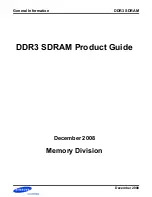
5
I. INTRODUCTION
1. MANUAL CONTENTS
This manual consists of 5 major sections and two appendices. These 5
sections cover a) a description of the external connections required, b)
detailed descriptions of the operational features and how to use them, c)
logic diagrams/schematics and descriptions of how the logic works, d) the
expansion buses and how to use them, and e) hints on troubleshooting in
case of difficulty. Appendix A Contains parts lists and assembly instructions
for the basic SUPER ELF and available options. Appendix B contains
complete data sheets on both the 1802 CPU and the 1861 video graphics
generator.
2. EXTERNAL CONNECTIONS
All external connections are located in the upper left hand corner of
the printed circuit board. These connections are summarized here and
discussed in more detail in both Section III Logic Design and Appendix A
Parts List and Assembly Instructions. Starting at the upper left-hand corner
and going to the right, the BAT pair of connections are used for the 2.4V
standby Ni-Cad battery included in the memory saver option. Next are the
SW1 connections used to connect the battery to the RAMS (also used in the
memory saver option). Next are the SW2 connections used to disable the
Rams (also used in the memory saver option). Next are the AC connections
which are used to supply power to the board from the supplied plug-in
transformer. Going back to the upper left-hand corner and going down the
left edge is the SPKR connections. This is the amplified output of the Q line.
Normally a speaker is connected here for audio effects. However, these
connections can also be used as a serial output port or a relay driver. Next
are the VID connections which are an amplified composite (sync and video)
video signal of approximately 2 volts peak to peak. This output may drive a
video monitor directly or it may be used to drive an RF modulator to allow
connections to any TV set's antenna terminals. Some RF modulators
available for this use work much better than others. One that has been tested
and approved is the VAMP INC. Model RFVM-1 which is available through
QUEST.
Summary of Contents for SUPER ELF
Page 1: ...SUPER ELF AN 1802 BASED MICRO COMPUTER BY QUEST COPYRIGHT 1977 BY QUEST ELECTRONICS ...
Page 12: ...12 Hexadecimal Keyboard Figure 1 ...
Page 14: ...14 Control Circuit G R S W Figure 2 ...
Page 16: ...16 Control Circuit M P I L Figure 3 ...
Page 18: ...18 ROM RAM Select Display Control Figure 4 ...
Page 20: ...20 RAM ROM Memory Figure 5 ...
Page 21: ...21 State Mode Display Figure 6 ...
Page 22: ...22 Output Data Display Figure 7 ...
Page 24: ...24 Address Buffers Latch Figure 8 ...
Page 26: ...26 Address Display Figure 9 ...
Page 27: ...27 Power Supply Memory Saver Figure 10 ...
Page 28: ...28 Video Generator Clock Generator I O Port Decode Q Circuit Figure 11 ...
Page 36: ...36 COMPONENT LAYOUT V 1 0 Figure 13 ...
Page 37: ...37 COMPONENT LAYOUT V2 0 Figure 14 ...
Page 38: ...38 BOARD WIRING PATTERN V1 0 FRONT Figure 15 ...
Page 39: ...39 BOARD WIRING PATTERN V1 0 BACK Figure 16 ...
Page 40: ...40 BOARD WIRING PATTERN V 2 0 FRONT Figure 17 ...
Page 41: ...41 BOARD WIRING PATTERN V 2 0 BACK Figure 18 ...






































